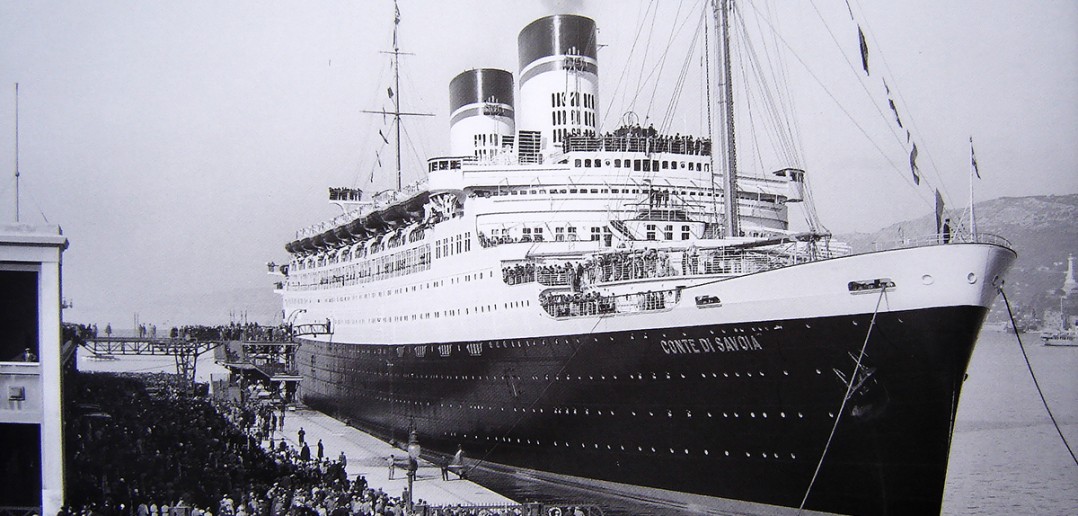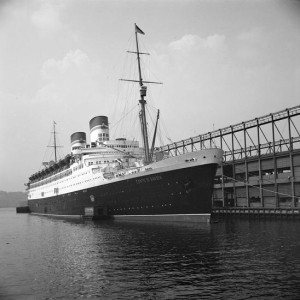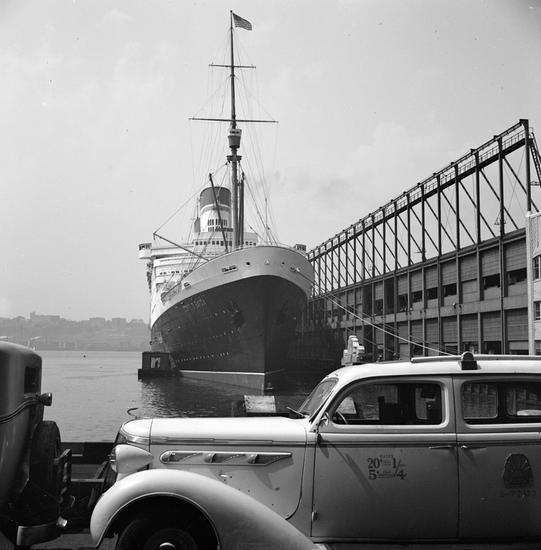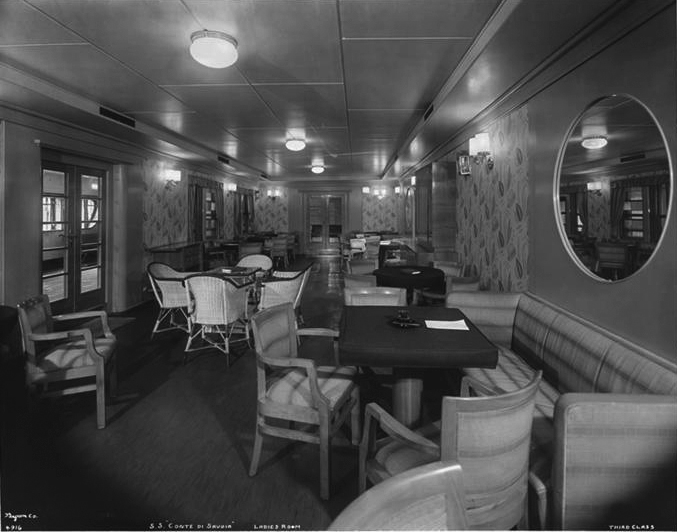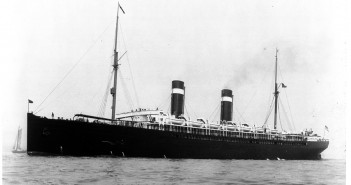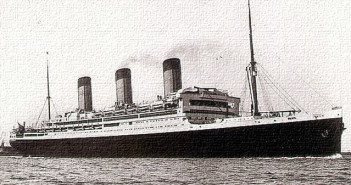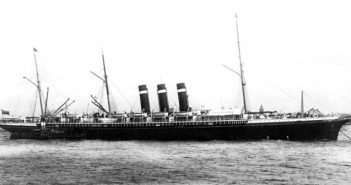Conte di Savoia was launched on 18 October 1931. Everything went according to plan—at least until the liner nearly exploded on her maiden voyage.
Italian Line’s 48,500 GRT Conte di Savoia was 814.5 feet long and 96 feet at beam. She was similar to, but slightly smaller than Rex, completed just two months earlier. The two-funnel Conte di Savoia could carry up to 2,200 passengers in four classes and 786 crew members.
While competing liners such as Ile de France and Bremen featured clean, modern Art Deco style, Conte di Savoia reveled in glitz and bling. One could say she anticipated Caesers Palace in Las Vegas by several decades. Her marble bedecked Colonna Lounge wowed passengers with its high ceiling decorated in murals. Along the sides of the giant room were statues standing on pedestals. The liner’s comparatively understated third-class rooms were actually more attractive, at least to the modern eye, than the liner’s higher class spaces.
Like Rex, Conte di Savoia experienced a problematic maiden voyage. In November 1932, on her first crossing to New York, the liner almost exploded when an outlet valve jammed and then blew a large hole in the hull below the waterline. Conte di Savoia was able to complete her maiden voyage, thanks to an alert and brave crewmember who plugged the hole with cement and was able to save the ship from becoming the second major ocean liner in history to sink on her maiden voyage.Although Conte di Savoia was fast—the ship reached an almost insane speed of 29.5 knots during her sea trials—she never won the Blue Riband.
One of Conte di Savoia’s most interesting features was a set of huge anti-roll gyroscopes installed in a lower forward hold. Rotating at high speed, the gyros were designed to eliminate sea sickness-inducing roll. Unfortunately, they also caused the vessel to “hang” annoyingly when she reached the extreme limit of her rolls. For this reason, and because they sometimes caused the ship to become dangerously unbalanced, the gyros were often turned off.
Conte di Savoia was set on fire and sunk by retreating German forces on 11 September 1943. She was re-floated in 1945, but eventually scrapped.

Please help keep Ocean Liners Magazine afloat. Any amount will be greatly appreciated.
—Regards, John Edwards, Editor/Publisher.

